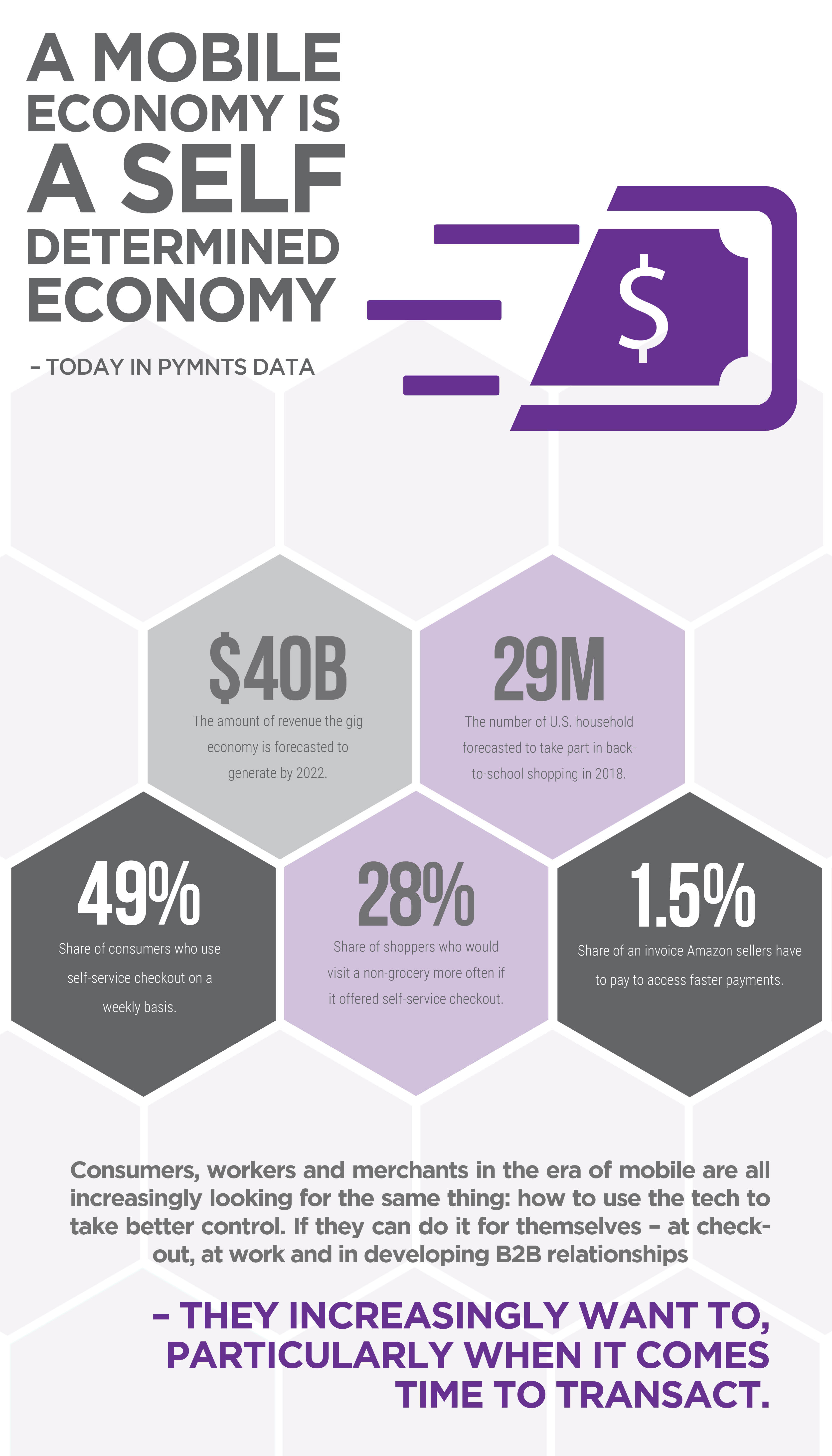Today In Data: A Mobile Economy Is A Self-Determined Economy

Some things won’t ever change. The change of summer to fall will likely always send tens of millions of American families scrambling to load up on school supplies of a variety of descriptions. But what will make the customer pick one location over another? That is becoming an increasingly complicated story – and one where customers’ self-determination is playing an increasingly large role. If customers can do for themselves at checkout and other points in the retail process, it often seems they’d prefer to do so. That drive to self-determine is powerful, and reaches beyond consumers. The exploding gig economy is a testament to workers’ desire to work for themselves. And the ongoing arguments between marketplaces and their members this summer are a reminder of just how grumpy merchants can get when they feel like their fortunes are determined by the rules and structures of their marketplaces.
 Data:
Data:
$40 billion: The amount of revenue the gig economy is forecasted to generate by 2022.
29 million: The number of U.S. household forecasted to take part in back-to-school shopping in 2018.
49 percent: Share of consumers who use self-service checkout on a weekly basis.
28 percent: Share of shoppers who would visit a non-grocery more often if it offered self-service checkout.
1.5 percent: Share of an invoice Amazon sellers have to pay to access faster payments.